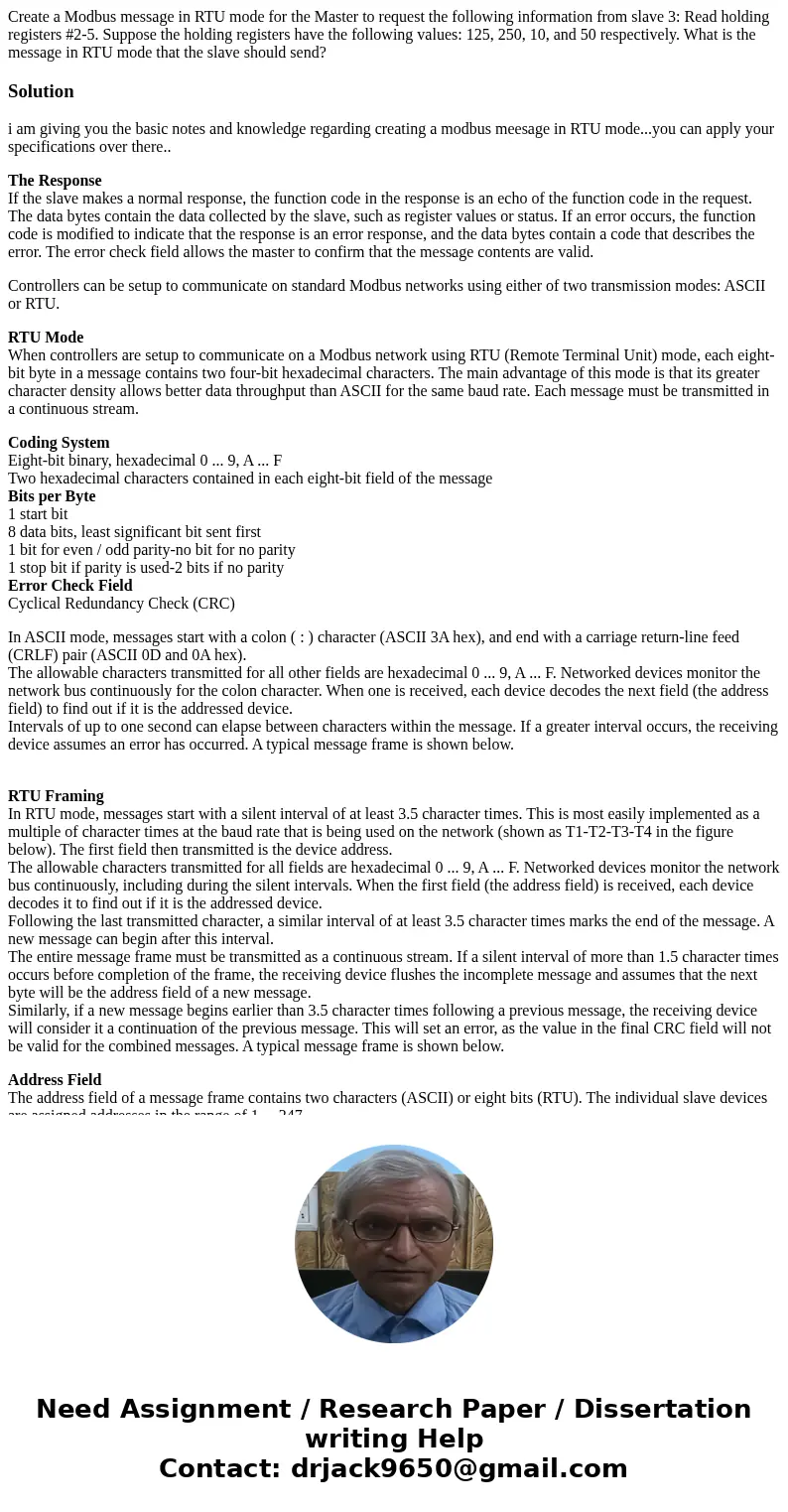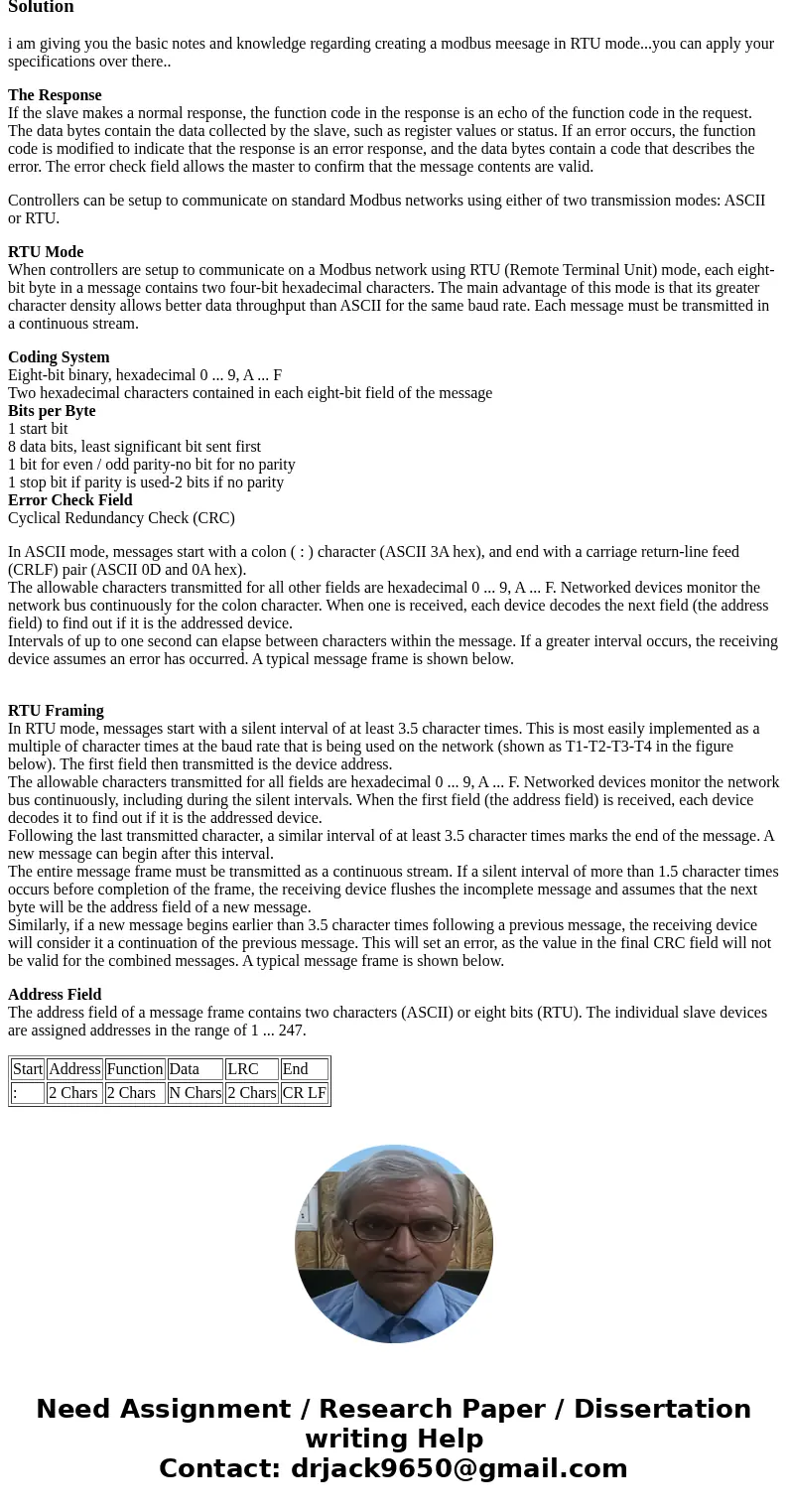Create a Modbus message in RTU mode for the Master to reques
Create a Modbus message in RTU mode for the Master to request the following information from slave 3: Read holding registers #2-5. Suppose the holding registers have the following values: 125, 250, 10, and 50 respectively. What is the message in RTU mode that the slave should send?
Solution
i am giving you the basic notes and knowledge regarding creating a modbus meesage in RTU mode...you can apply your specifications over there..
The Response
If the slave makes a normal response, the function code in the response is an echo of the function code in the request. The data bytes contain the data collected by the slave, such as register values or status. If an error occurs, the function code is modified to indicate that the response is an error response, and the data bytes contain a code that describes the error. The error check field allows the master to confirm that the message contents are valid.
Controllers can be setup to communicate on standard Modbus networks using either of two transmission modes: ASCII or RTU.
RTU Mode
When controllers are setup to communicate on a Modbus network using RTU (Remote Terminal Unit) mode, each eight-bit byte in a message contains two four-bit hexadecimal characters. The main advantage of this mode is that its greater character density allows better data throughput than ASCII for the same baud rate. Each message must be transmitted in a continuous stream.
Coding System
Eight-bit binary, hexadecimal 0 ... 9, A ... F
Two hexadecimal characters contained in each eight-bit field of the message
Bits per Byte
1 start bit
8 data bits, least significant bit sent first
1 bit for even / odd parity-no bit for no parity
1 stop bit if parity is used-2 bits if no parity
Error Check Field
Cyclical Redundancy Check (CRC)
In ASCII mode, messages start with a colon ( : ) character (ASCII 3A hex), and end with a carriage return-line feed (CRLF) pair (ASCII 0D and 0A hex).
The allowable characters transmitted for all other fields are hexadecimal 0 ... 9, A ... F. Networked devices monitor the network bus continuously for the colon character. When one is received, each device decodes the next field (the address field) to find out if it is the addressed device.
Intervals of up to one second can elapse between characters within the message. If a greater interval occurs, the receiving device assumes an error has occurred. A typical message frame is shown below.
RTU Framing
In RTU mode, messages start with a silent interval of at least 3.5 character times. This is most easily implemented as a multiple of character times at the baud rate that is being used on the network (shown as T1-T2-T3-T4 in the figure below). The first field then transmitted is the device address.
The allowable characters transmitted for all fields are hexadecimal 0 ... 9, A ... F. Networked devices monitor the network bus continuously, including during the silent intervals. When the first field (the address field) is received, each device decodes it to find out if it is the addressed device.
Following the last transmitted character, a similar interval of at least 3.5 character times marks the end of the message. A new message can begin after this interval.
The entire message frame must be transmitted as a continuous stream. If a silent interval of more than 1.5 character times occurs before completion of the frame, the receiving device flushes the incomplete message and assumes that the next byte will be the address field of a new message.
Similarly, if a new message begins earlier than 3.5 character times following a previous message, the receiving device will consider it a continuation of the previous message. This will set an error, as the value in the final CRC field will not be valid for the combined messages. A typical message frame is shown below.
Address Field
The address field of a message frame contains two characters (ASCII) or eight bits (RTU). The individual slave devices are assigned addresses in the range of 1 ... 247.
| Start | Address | Function | Data | LRC | End |
| : | 2 Chars | 2 Chars | N Chars | 2 Chars | CR LF |


 Homework Sourse
Homework Sourse